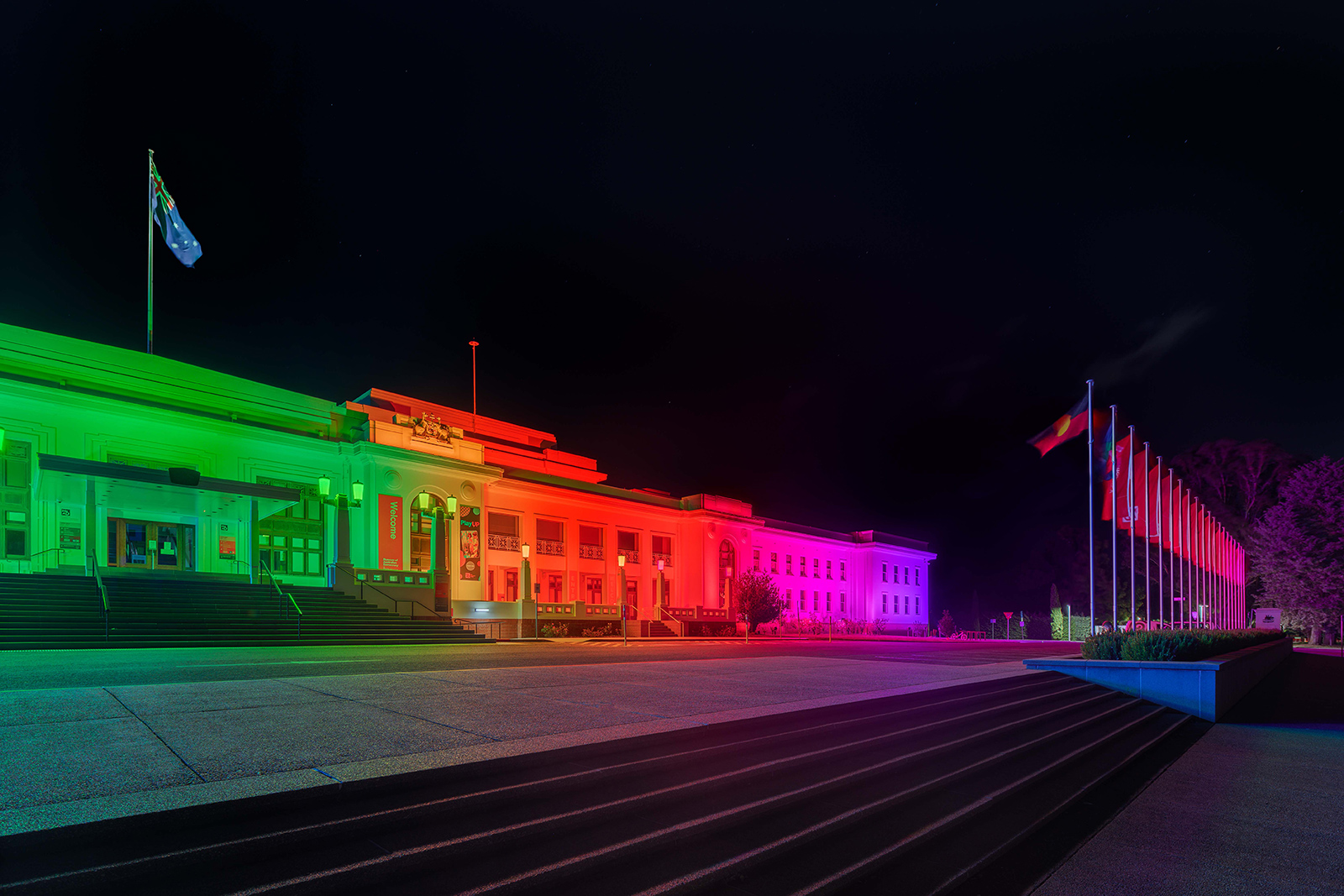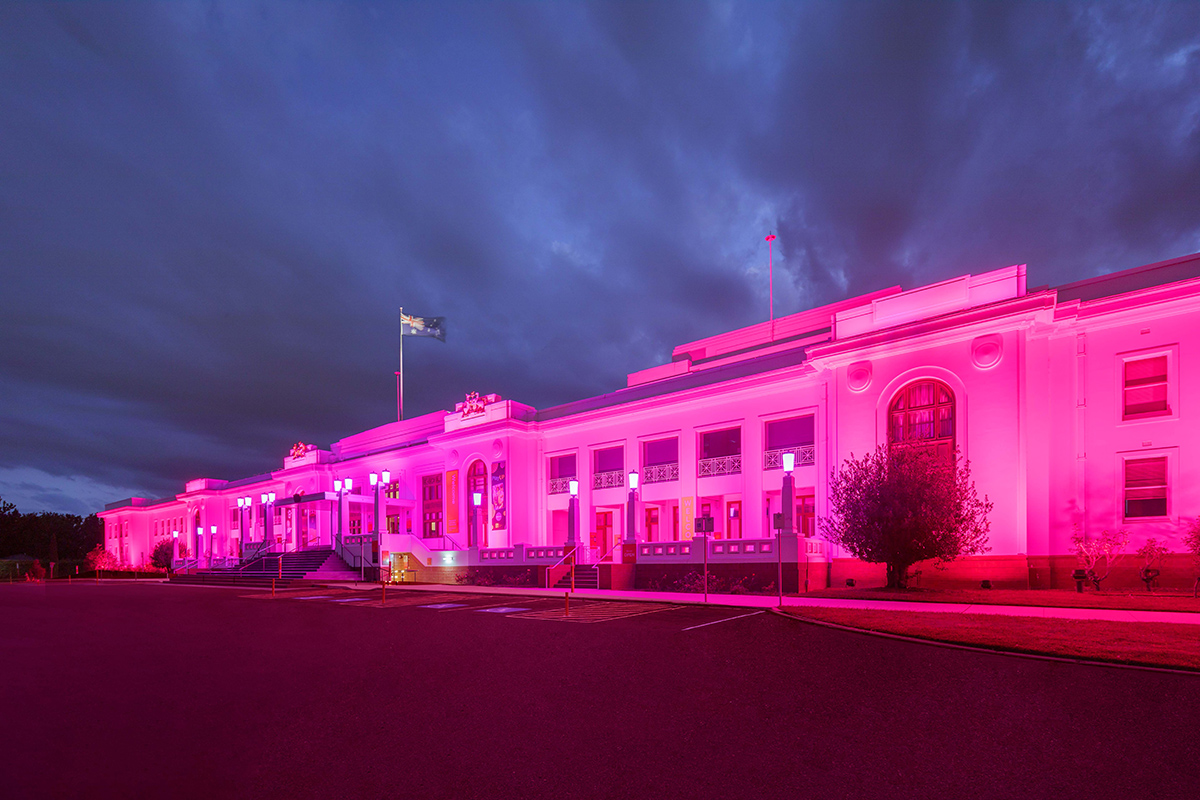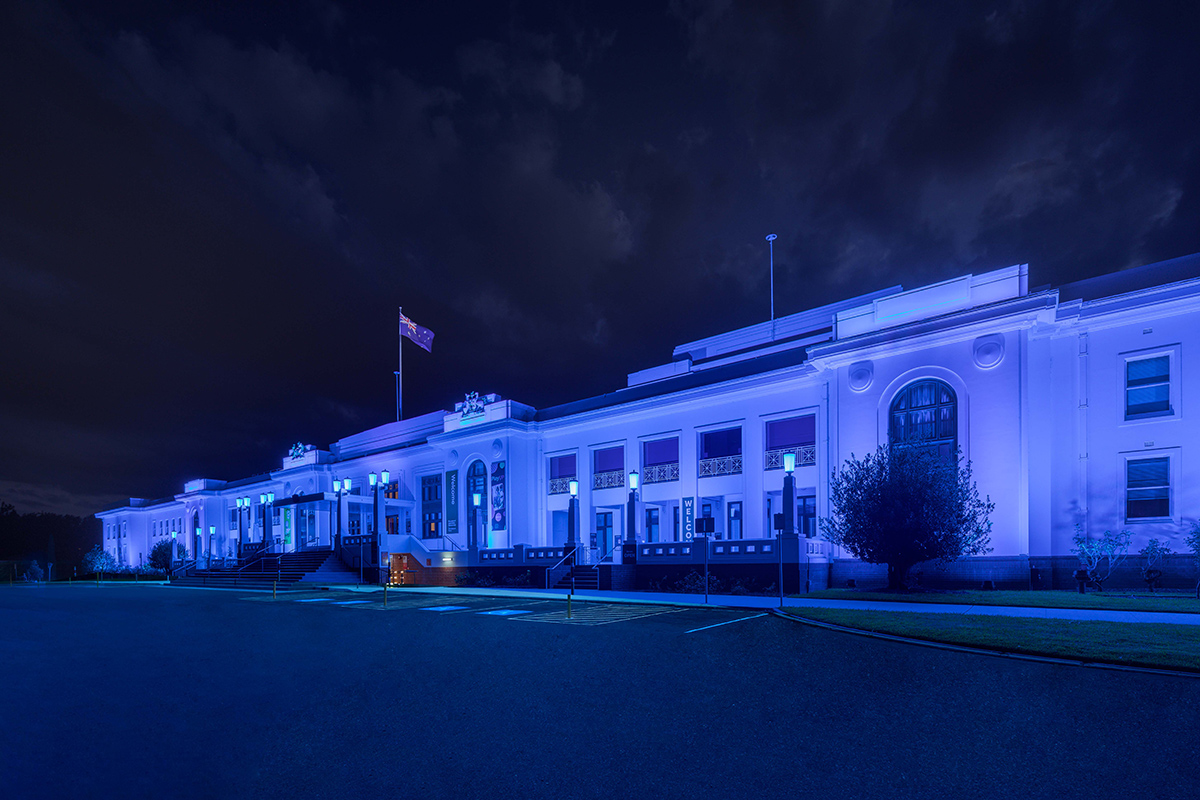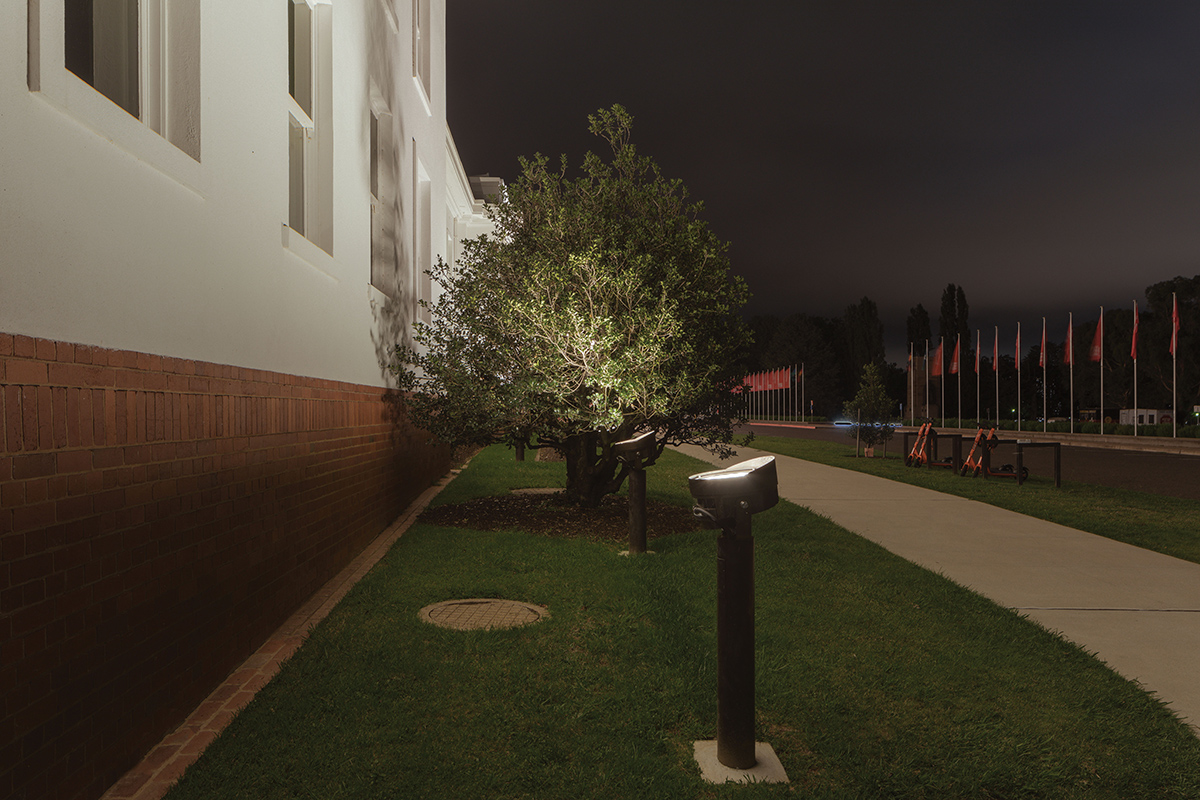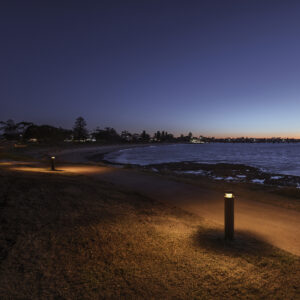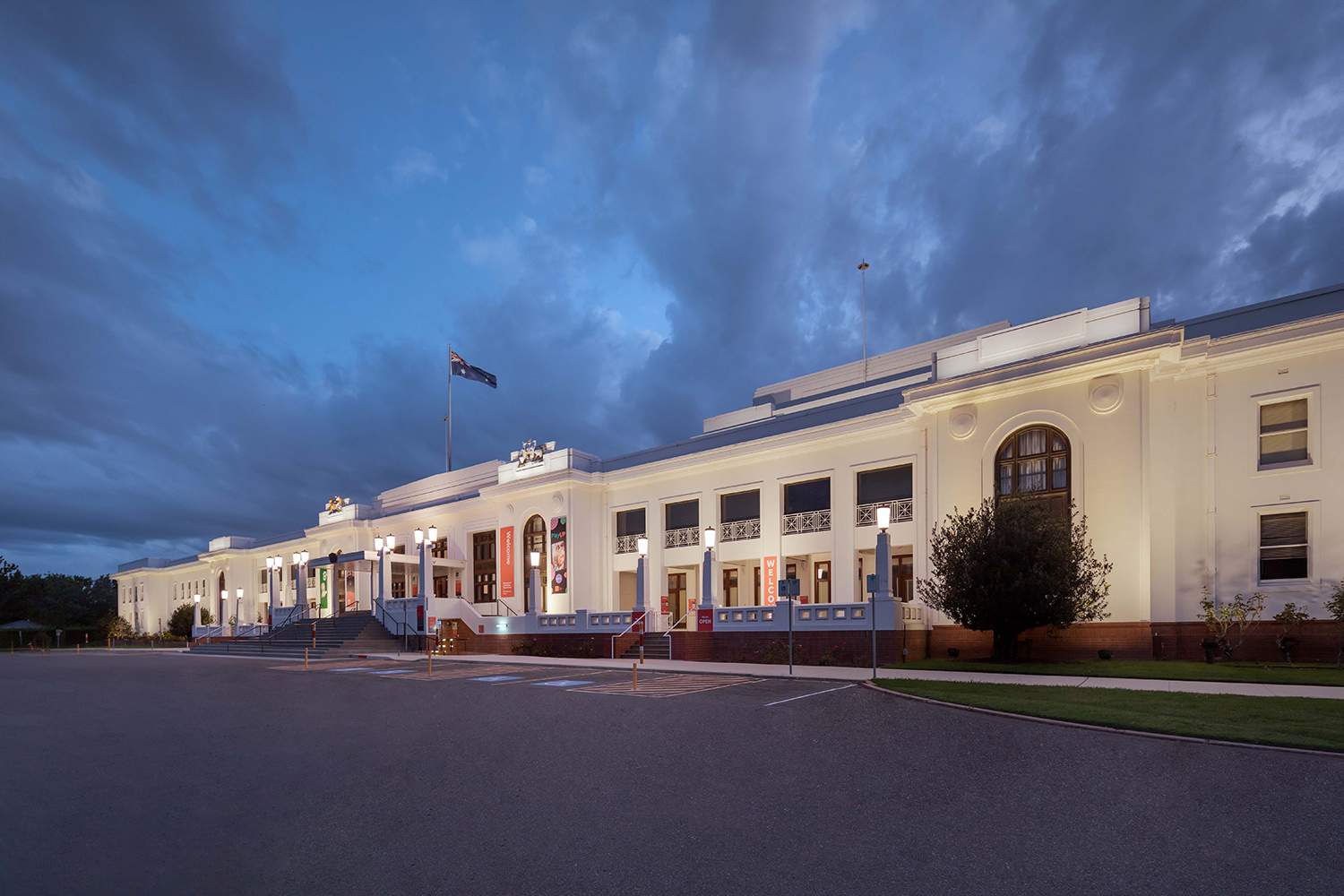
FACADE, PROJECTORS, WALL LUMINAIRES
Old Parliament House seen in a new light
Canberra, ACT
- Completed2020
- ClientOld Parliament House
- Sales PartnerIntegral Lighting
- Lighting DesignWSP – Anthony Linard & Rachel Thomson
- BuilderManteena
- PhotographyJackie Chan
Old Parliament House was the home of Australia’s Federal Parliament from 1927 to 1988. Today, the building is listed on the National Heritage Register and is home to the Museum of Australian Democracy – a museum that tells the story of Australia’s democracy, including the history and heritage of the building. The House was recently given a new design element through the addition of dynamic colour-changing lighting, designed by WSP and supplied by WE-EF Sales Partner, Integral Lighting.
While the building is important because of the events that occurred there, it is also significant in terms of architectural value. The House was designed by John Smith Murdoch, the first Commonwealth Government architect. He was asked to design a provisional building that would serve as a parliament for 50 years. Murdoch worked with the stripped classical style, common in government buildings in the 1920s and 1930s.
The exterior of the House is white, which provides the perfect canvas for projected light as it renders colour well. The new design features a combination of FLC200-CC and VLR100-CC luminaires from WE-EF to light the front façade of the building.
“The main objective was to achieve uniform wallwashing in white while providing a colour changing solution,” said Alex Skaines, managing director of Integral Lighting. “The external walls of Old Parliament House are stark white, so any imperfections in the wallwashing lens optics showed. There was nowhere to hide,” he said.
The FLC200-CC is a colour changing projector series coming in RGBW and RGBA variants, with DMX interface and wide, medium or narrow beam distribution. The VLR100 linear lighting wallwasher series is a colour changing, surface mounted luminaire suitable for either indoor or outdoor applications for accentuating architectural facades and highlighting other vertical and horizontal surfaces.
The owners of the House had known for some time what lighting effects they wanted for the building, but the technological capability only recently became available. According to Mr Skaines the WE-EF technology was competing against several other manufacturers. “It was the wallwash lens capability that secured the job in the end,” he said.
The previous lighting system was an old halogen floodlight, which required the use of colour filters in order to change colour. The new design by WSP provided a much more dynamic, effective and efficient colour changing solution. “Integral Lighting assisted in the finessing of the lenses and luminaire locations,” Mr. Skaines explained.
The primary challenge of the project was the installation of the DMX communication with the luminaires. “DMX integration with the FLC200-CC projectors was the biggest challenge. The custom finish was also a major challenge. The WE-EF technical team helped overcome both of these issues simply by not giving up on finding a solution,” said Mr Skaines.
According to Stefan Kisser from WE-EF, “normally, a standard fitting for DMX would have the lighting control signal sent by cable. Because Old Parliament House is a heritage building, the contractor was not able to add a new conduit to the building – so we only had the option of using the existing copper conduit, but it was too small for the DMX data cable.” WE-EF explored the option of going wireless, but with another wireless DMX installation adjacent to Old Parliament House there were concerns about interference.
“Eventually, we found a cable that was thick enough to meet the technical requirements but thin enough to pull through the old copper conduit. That enabled us to use the standard technology where the information about lighting control was transmitted by cable,” Mr Kisser explained. He noted that the advantage of the DMX technology is that it is based on stage lighting. “It’s designed for dynamic processes, so you can have colour changing effects running across the building…it allows you to paint the whole building in light,” said Mr Kisser.
Mr Skaines said everyone involved in the project was very happy with the outcome. “There has been nothing but praise for the WE-EF product,” he said.
